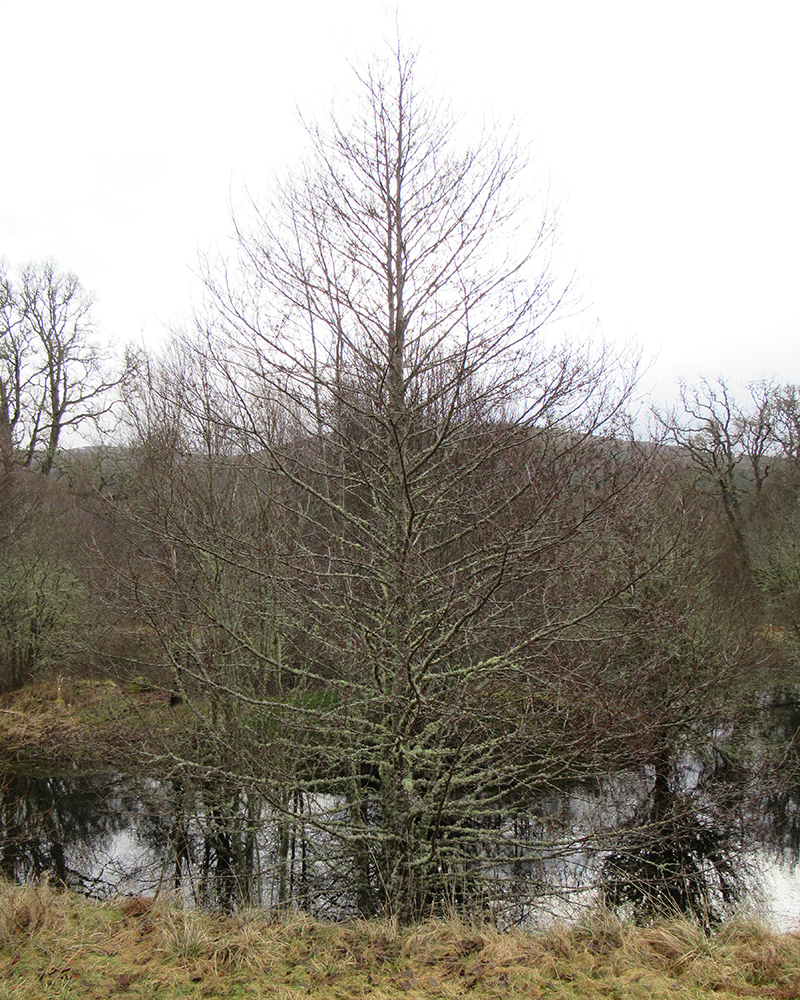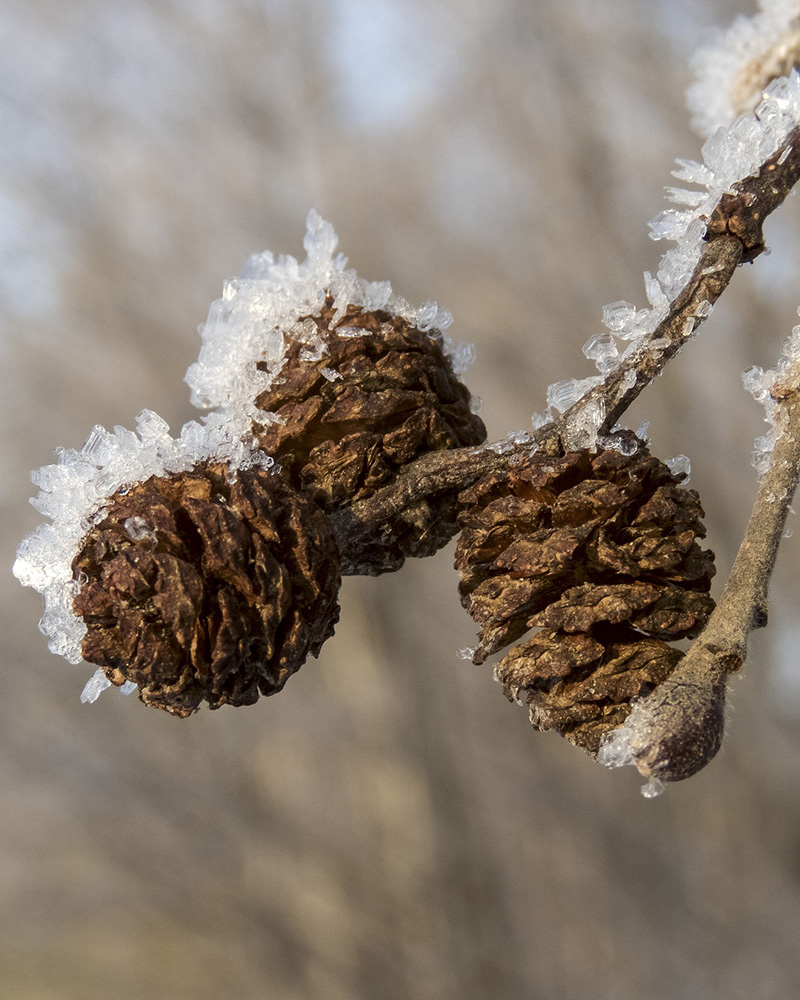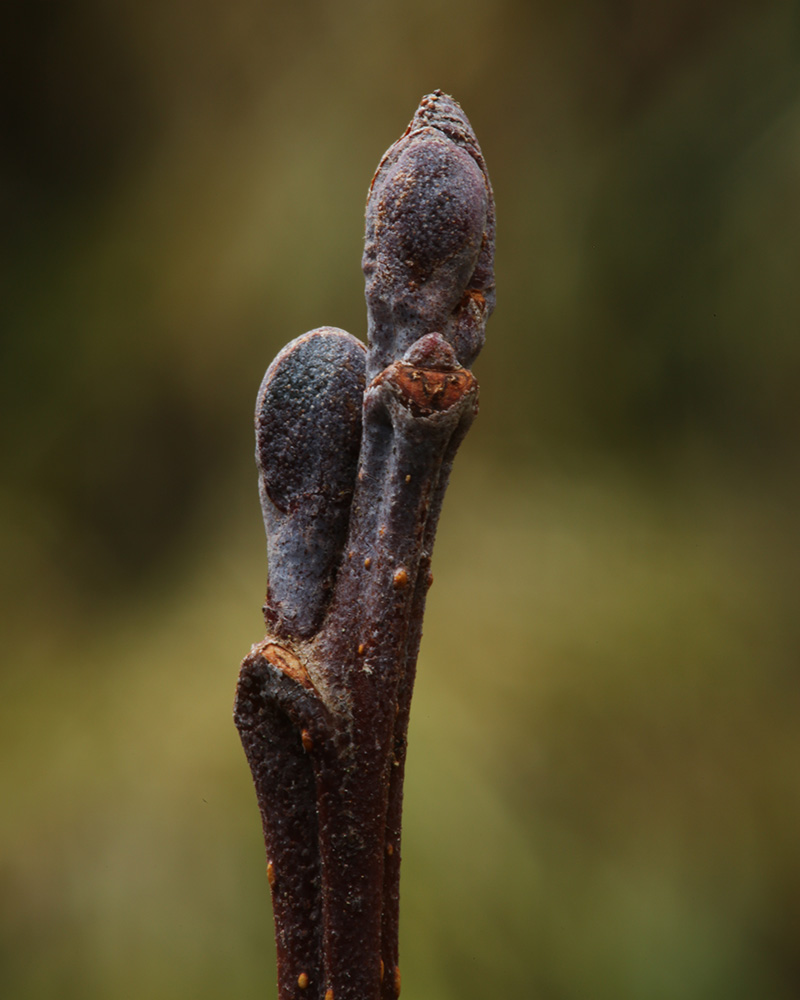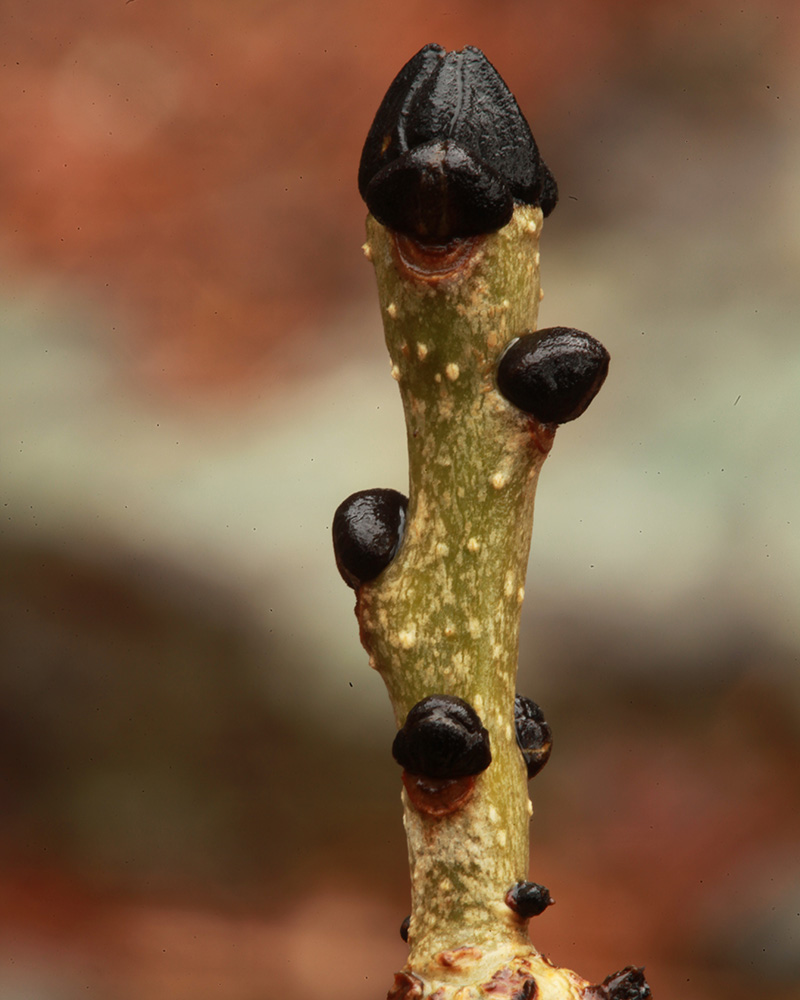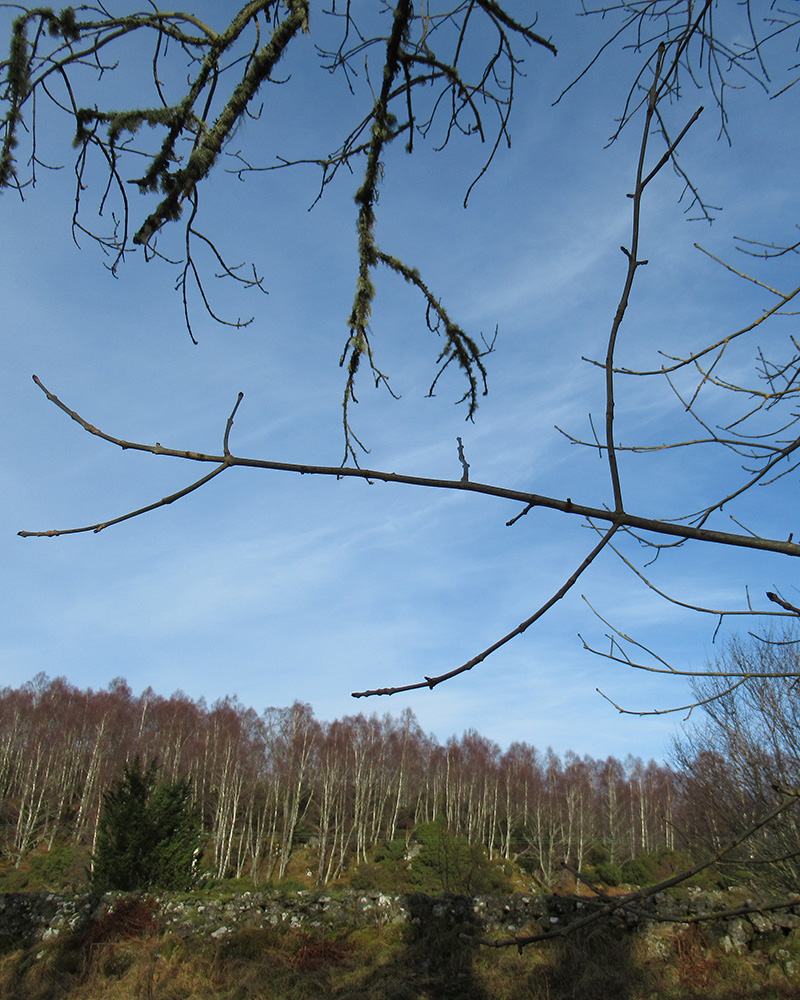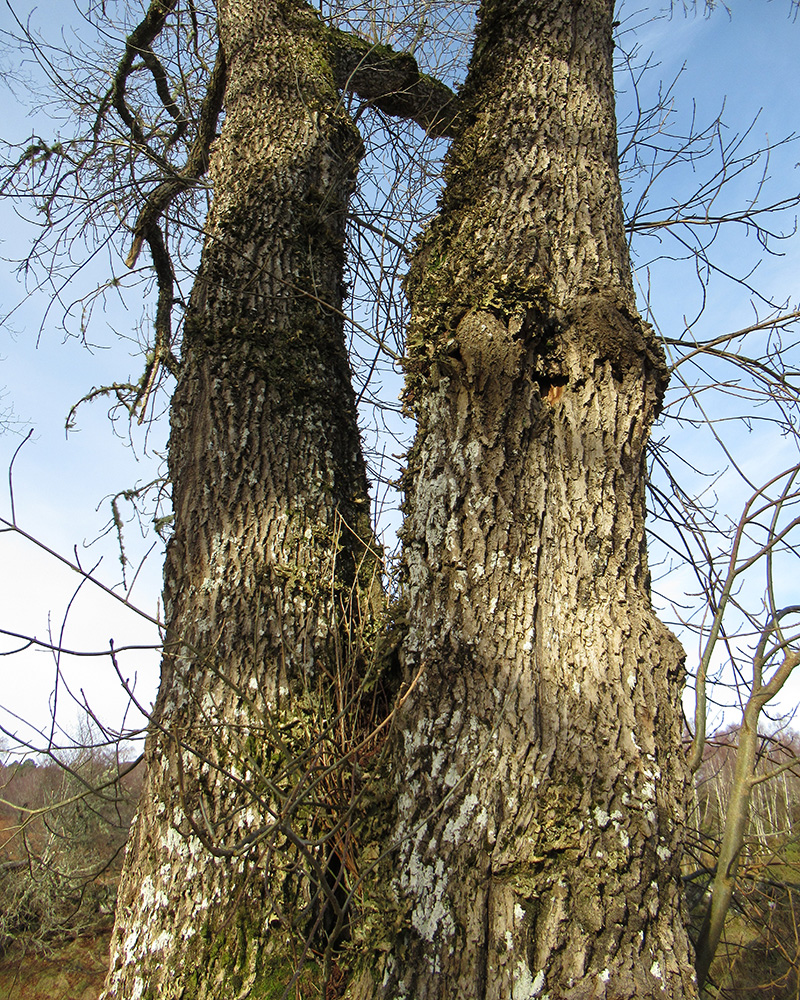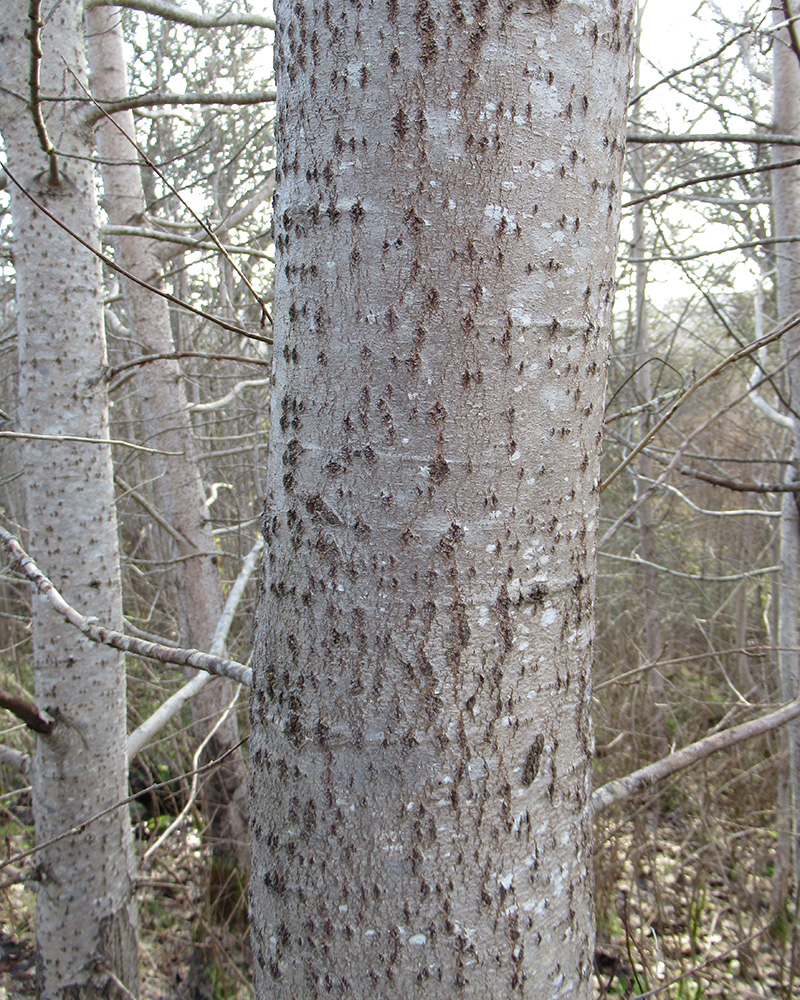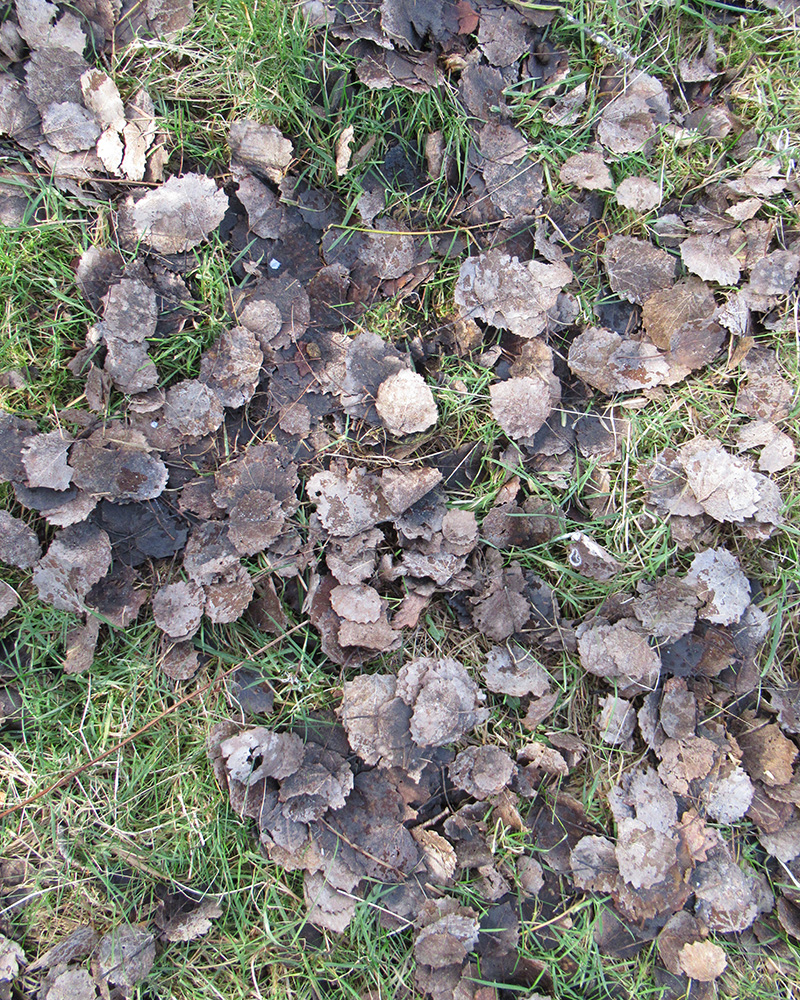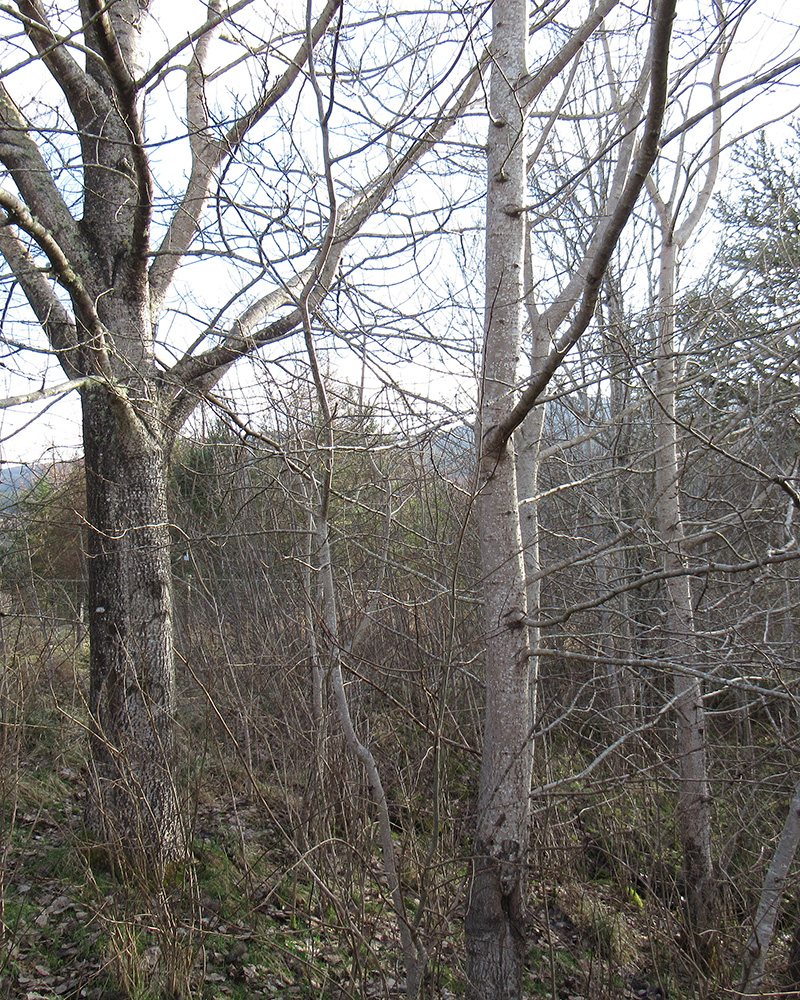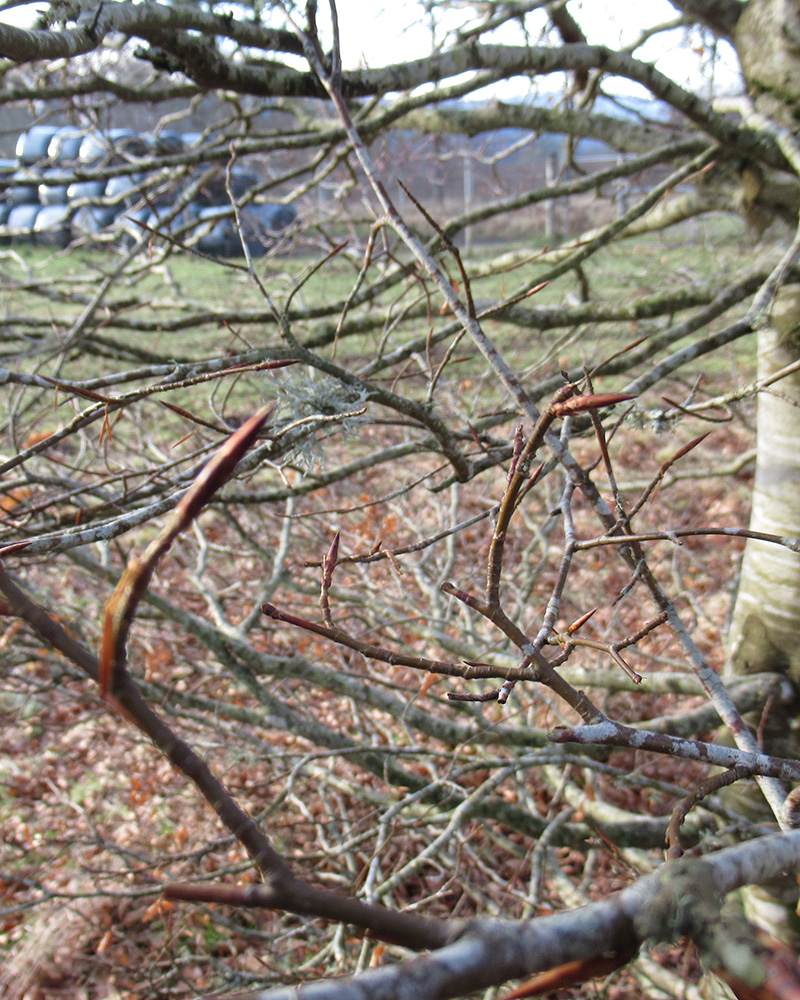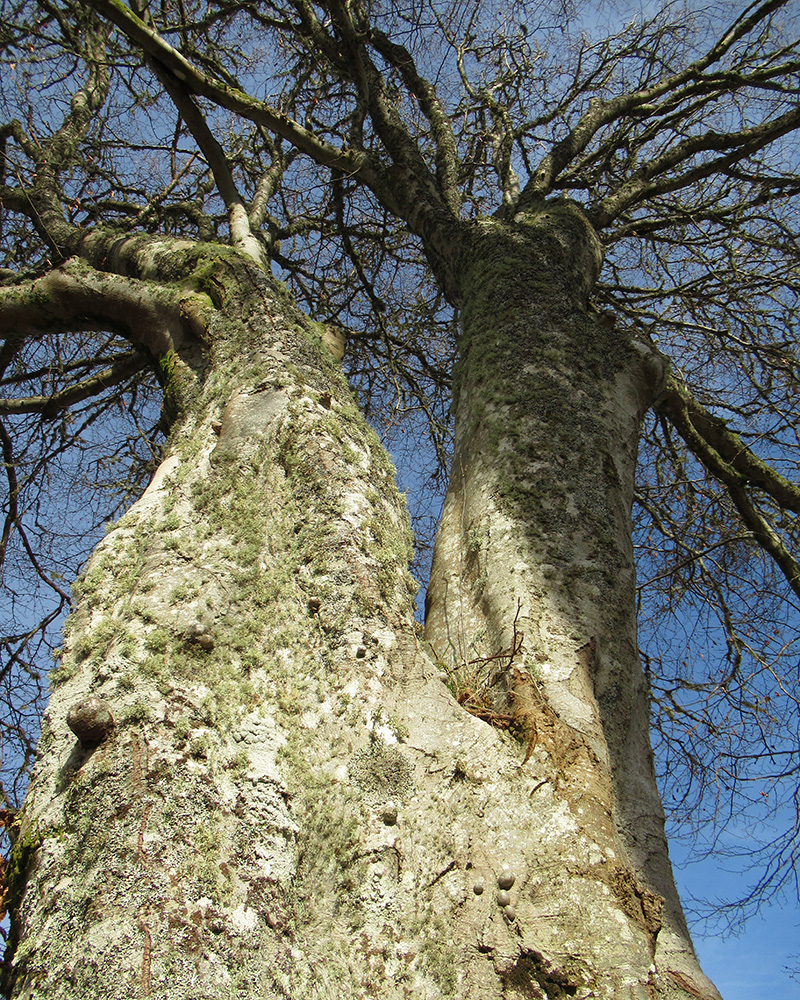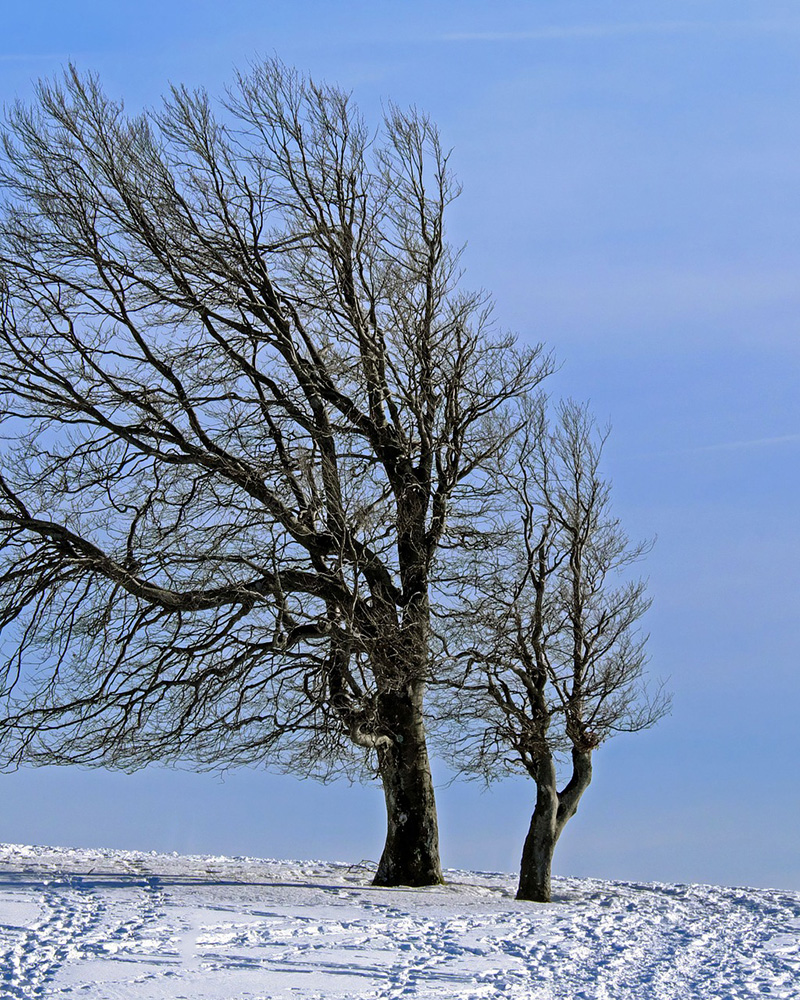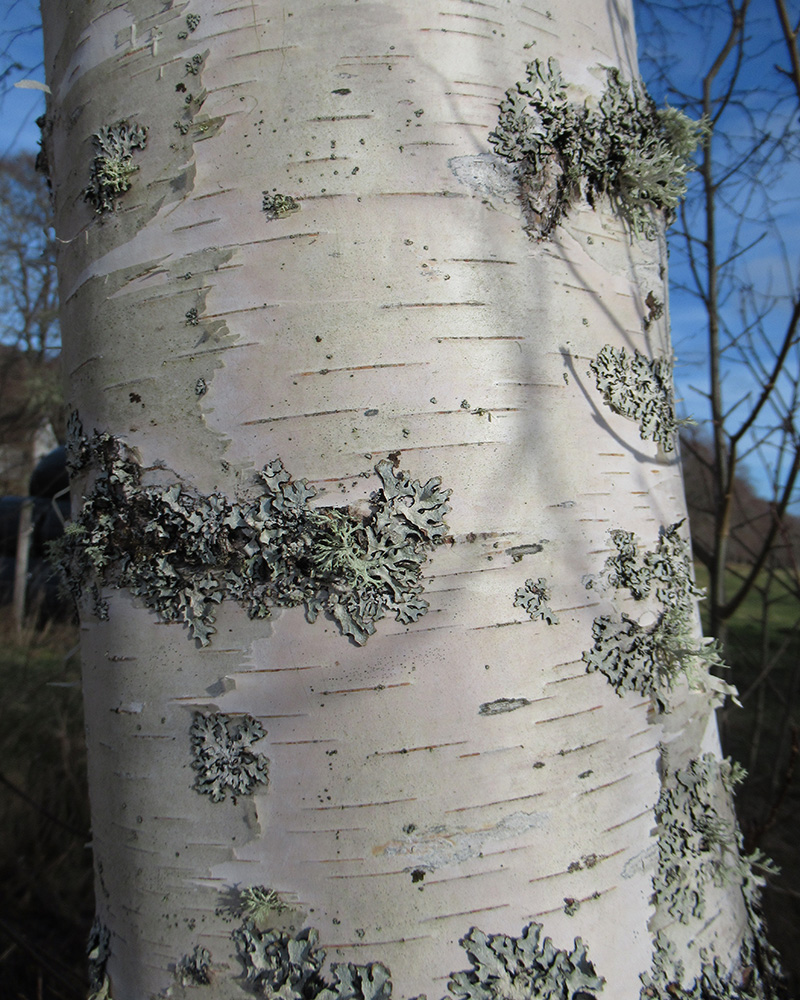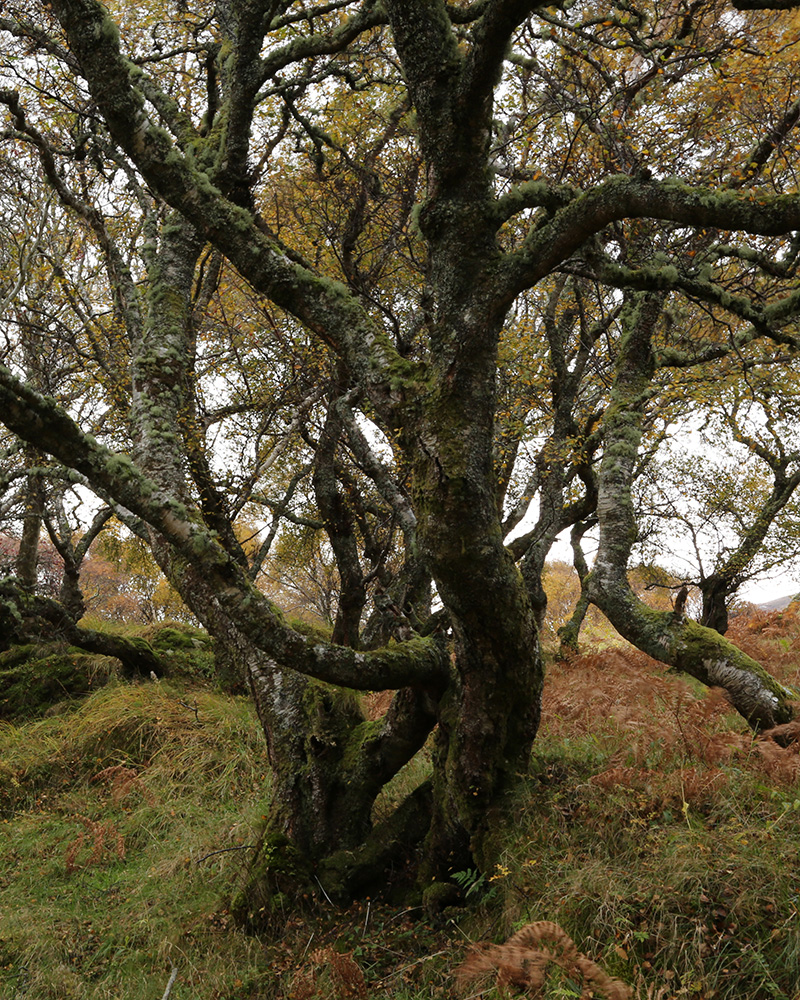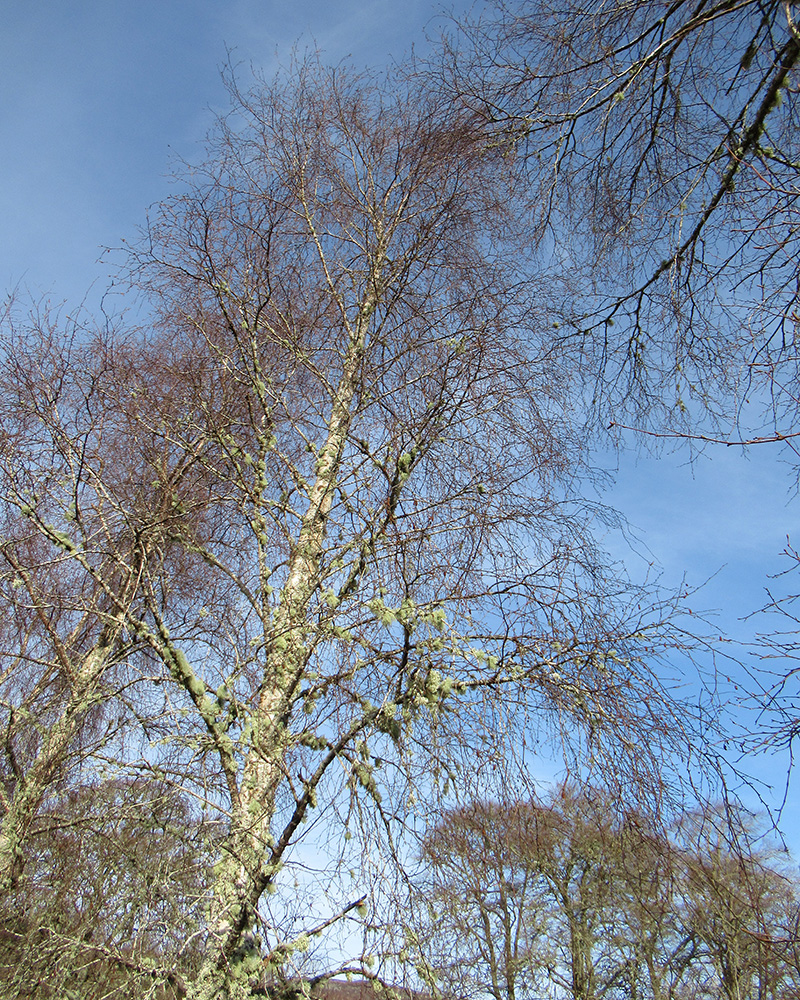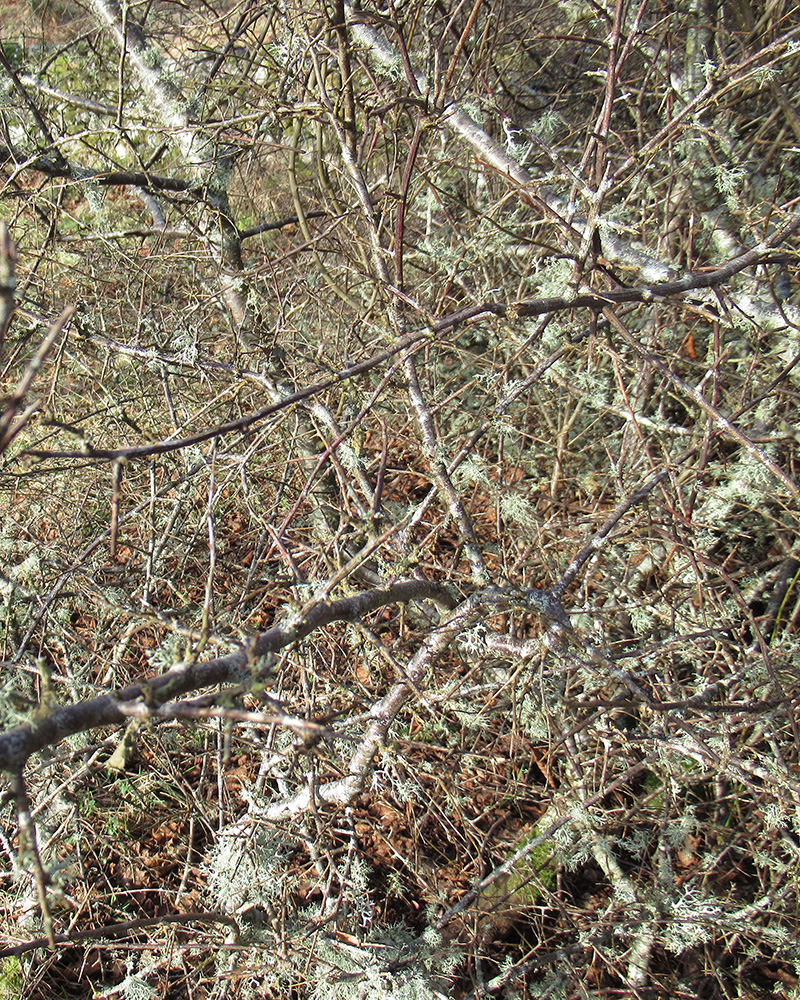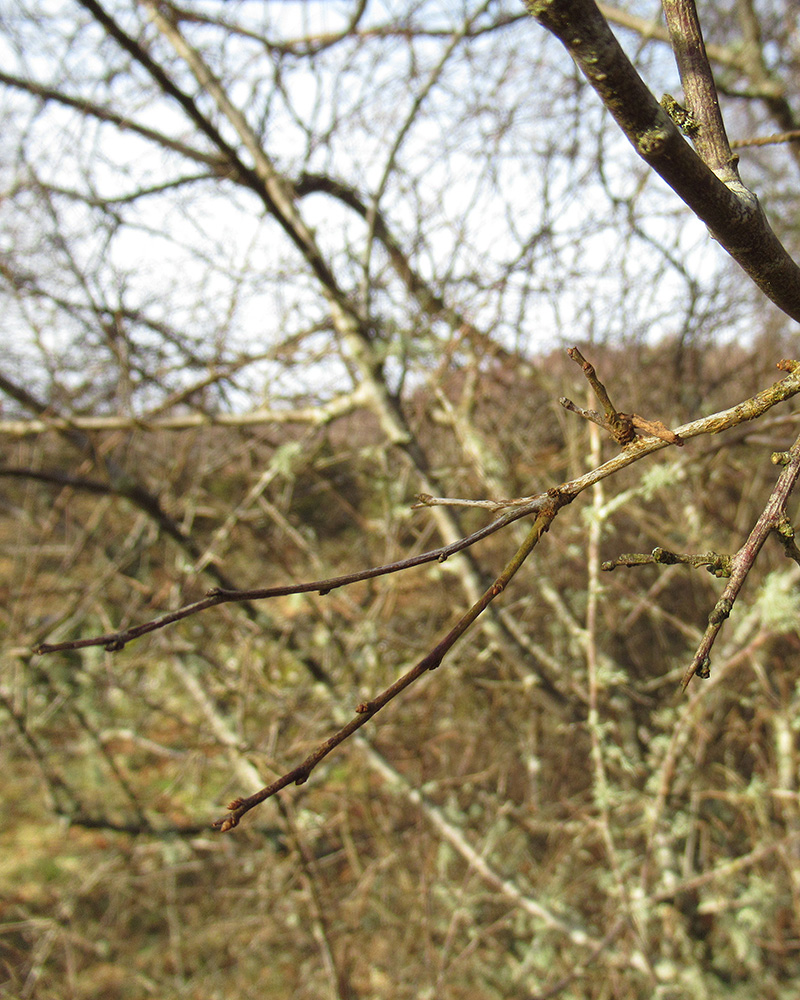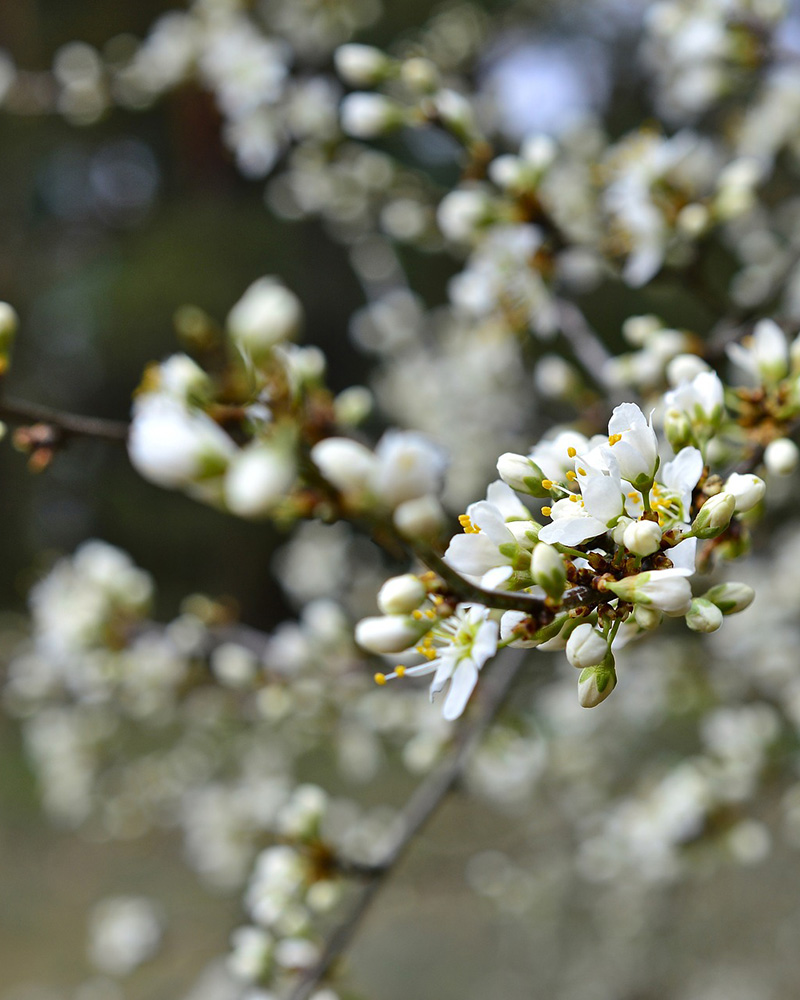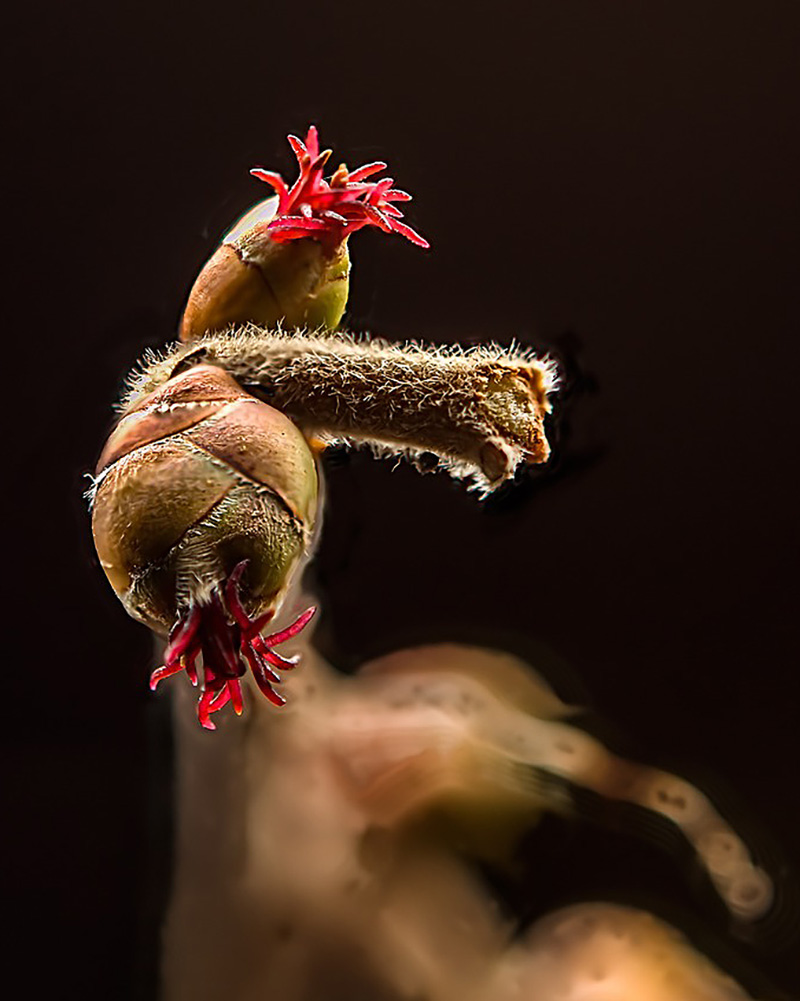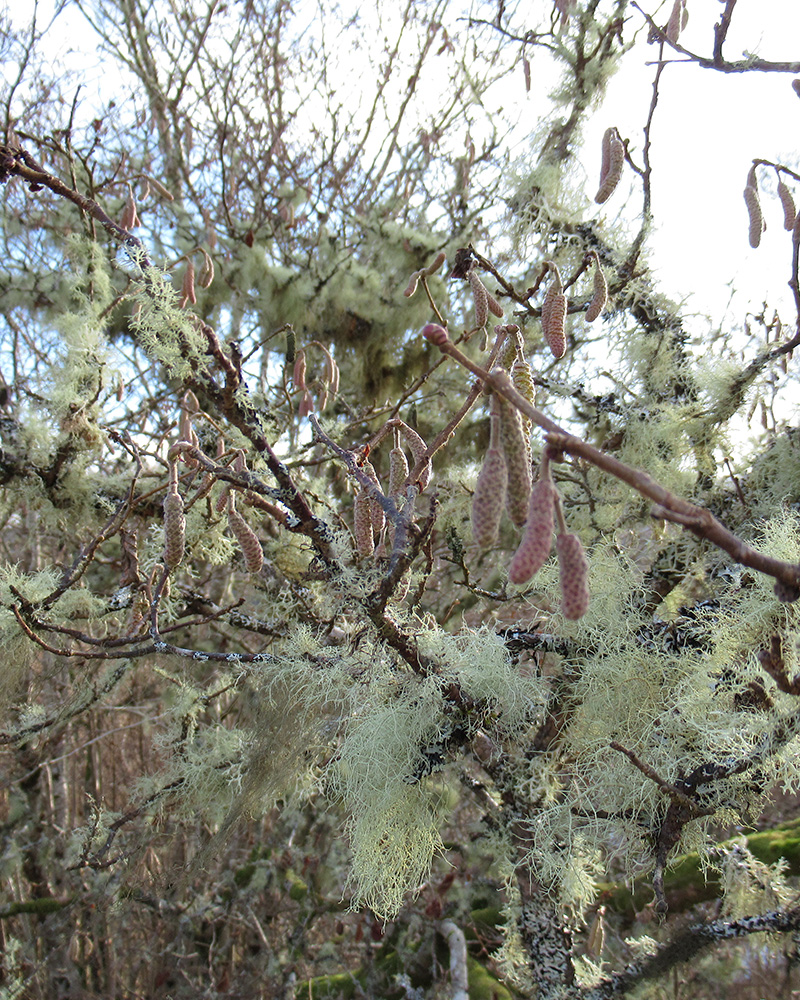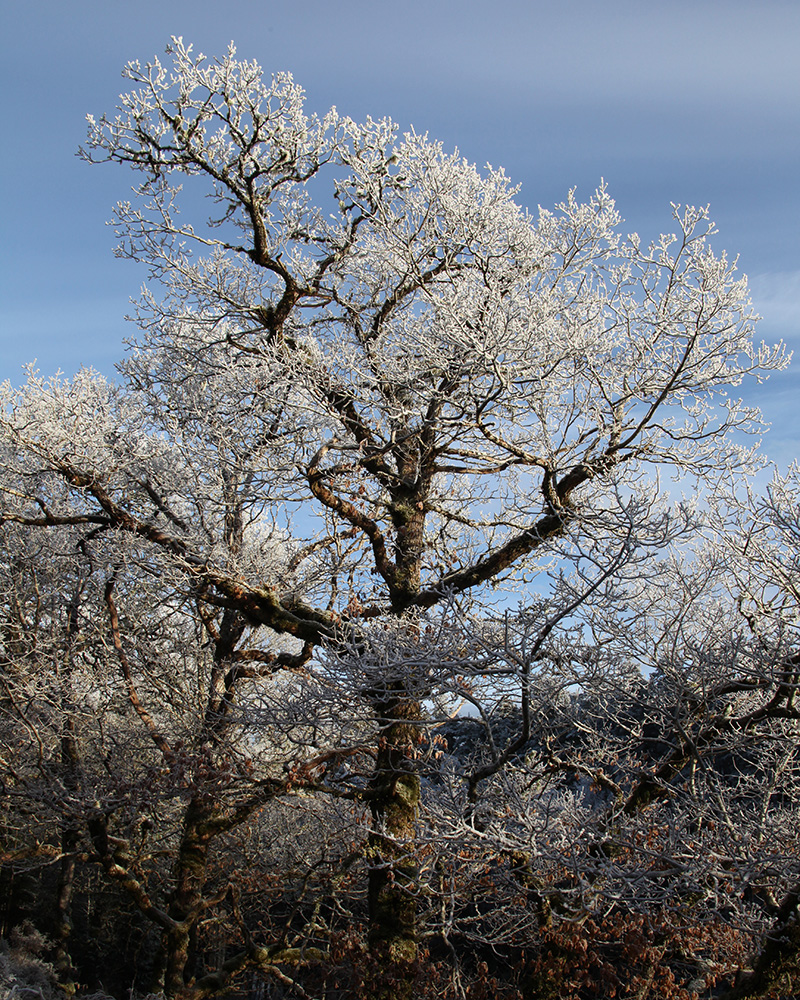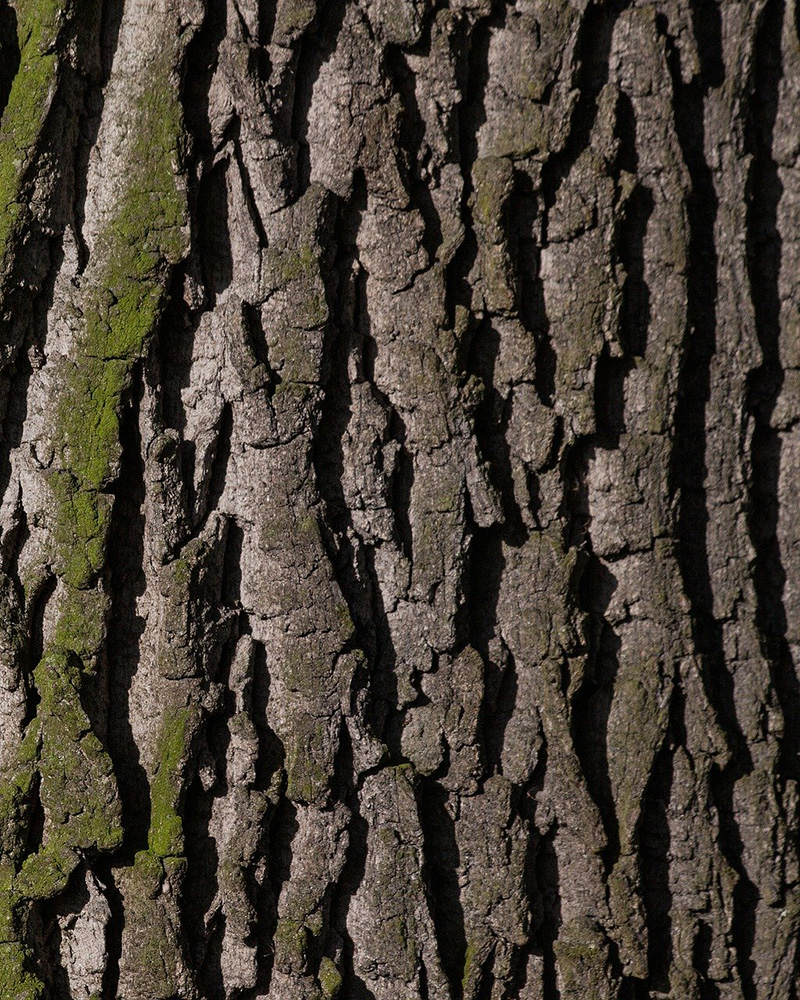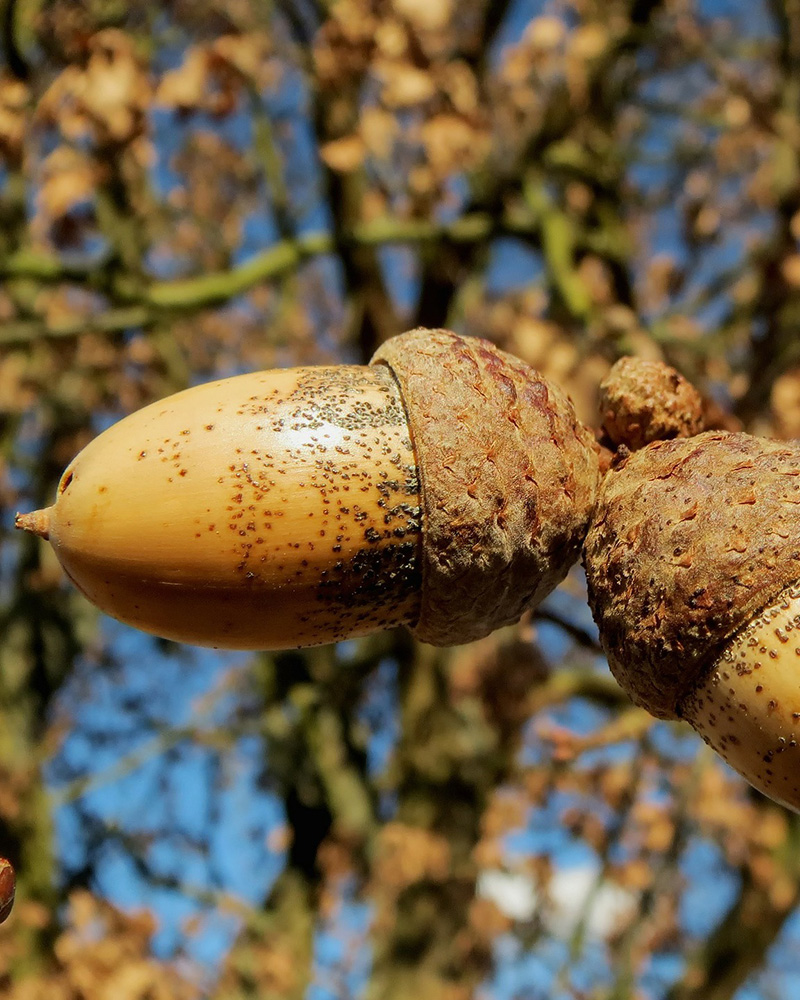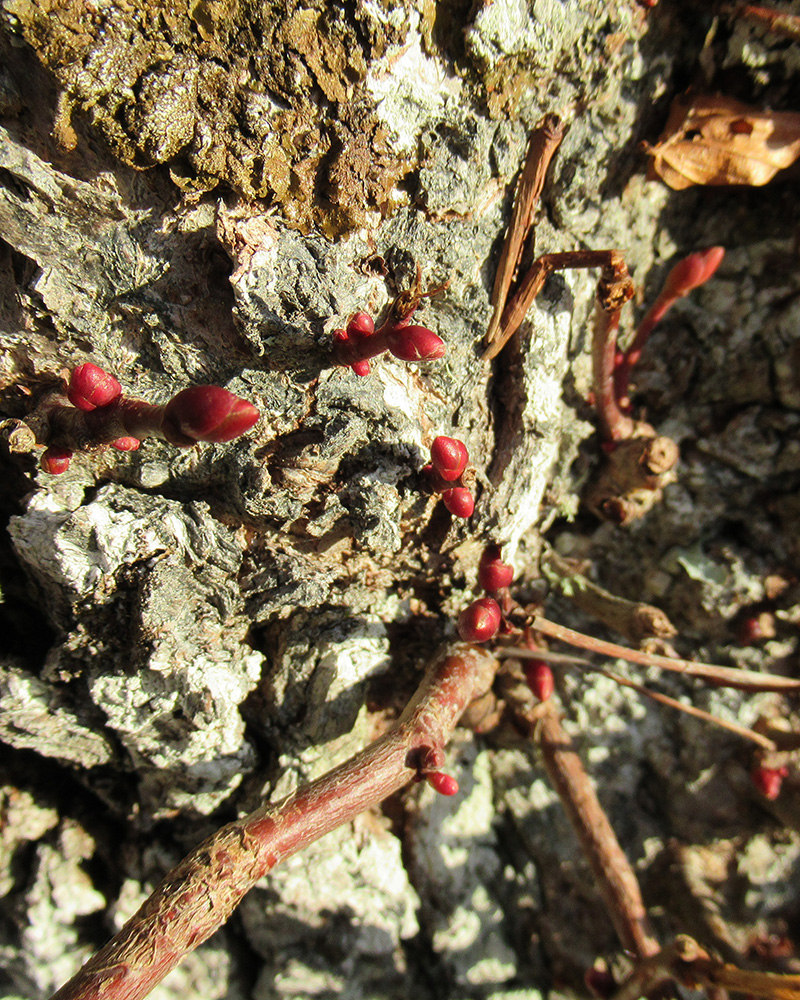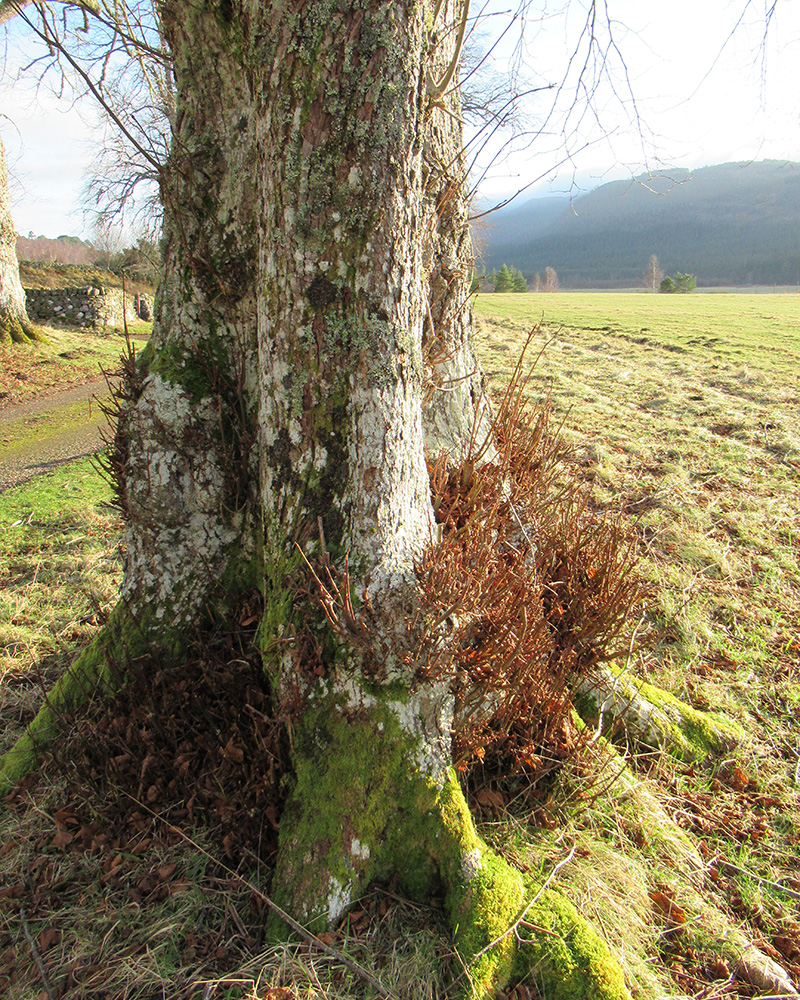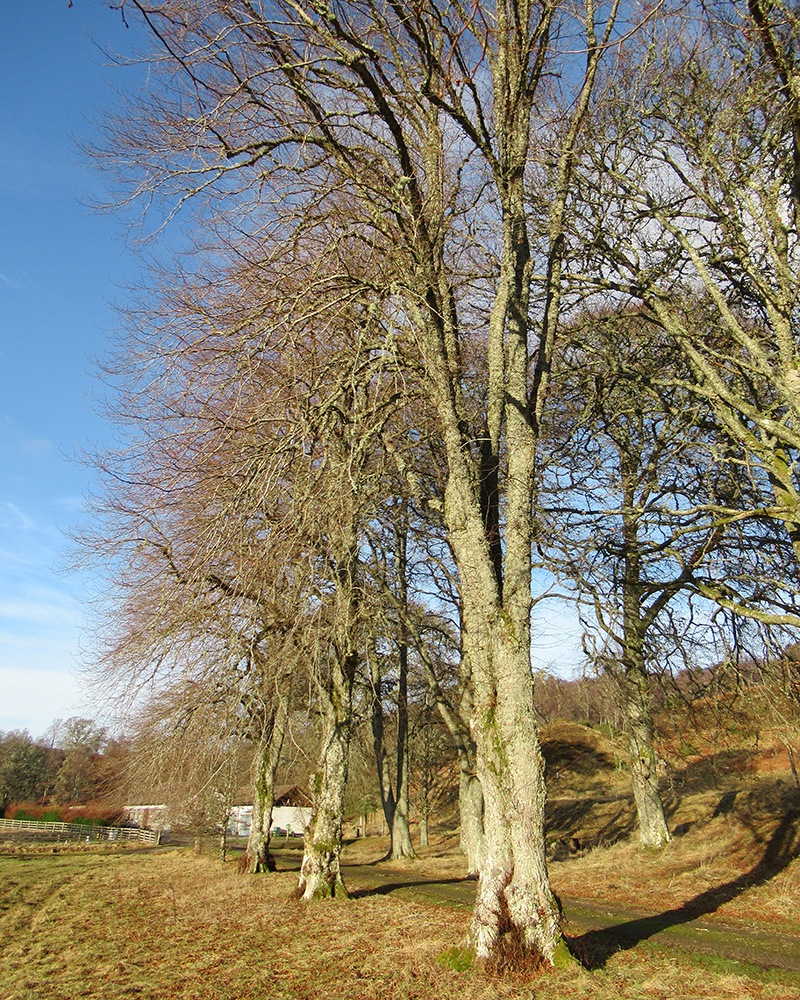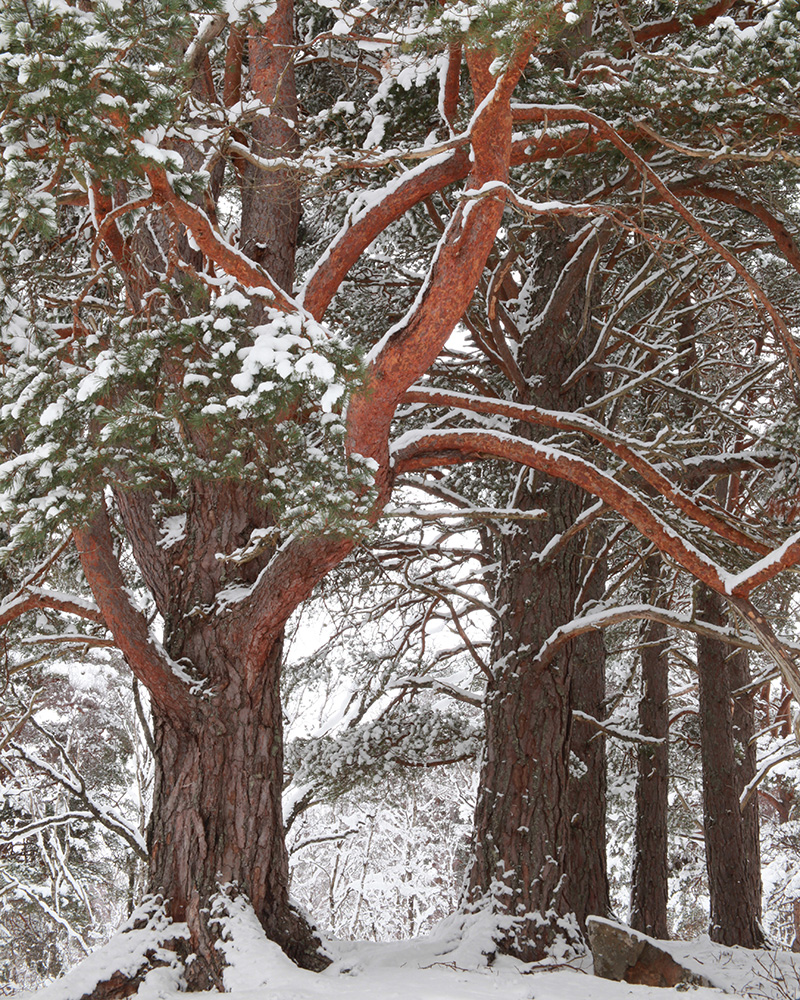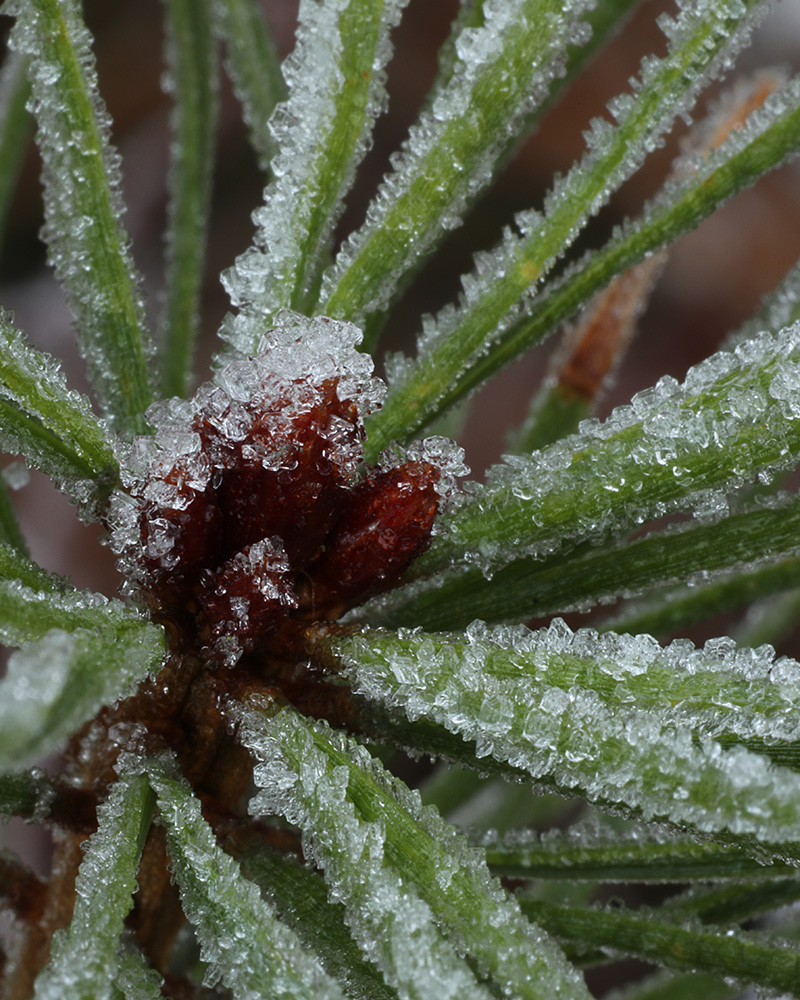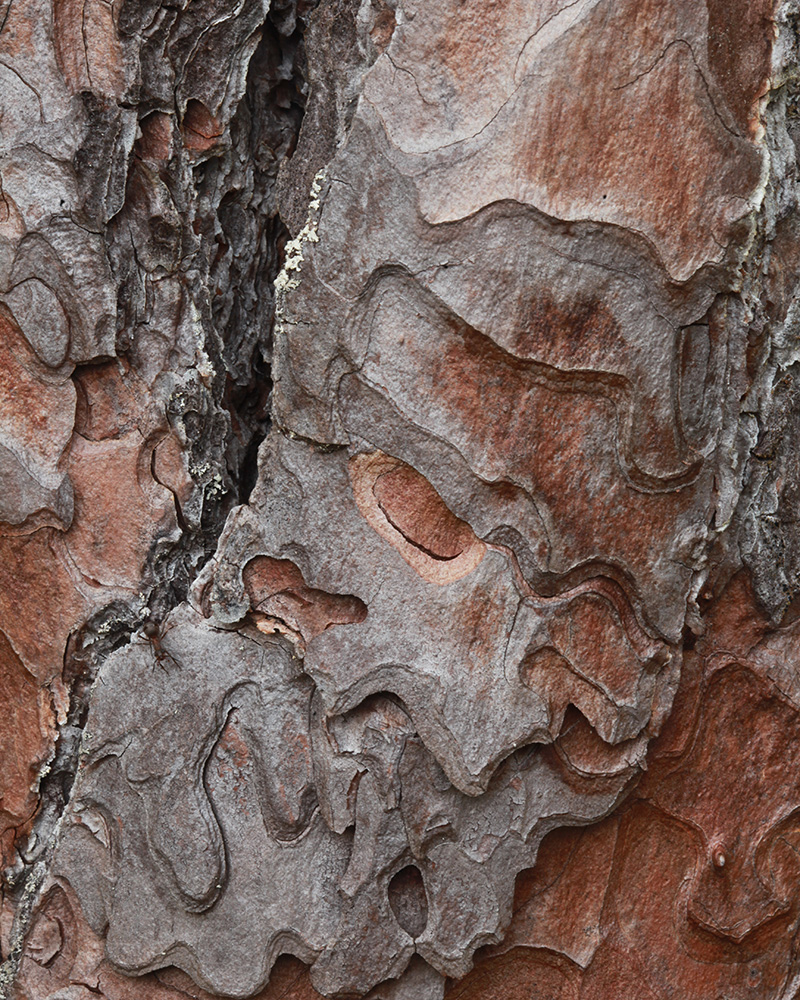How well do you know your trees?
Do you struggle to identify trees when the leaves fall? Learn how to identify some common Scottish trees from their features – such as shape, bark, twigs and buds.
Alder
Fearna – Gaelic
Alnus glutinosa – Latin
- Often grows near water
- Purple, boxing glove-shaped buds
- Small round cones present year-round
- Often grows in a distinctive Christmas tree shape (see photo)
- The wood turns a bright red when cut, leading to superstitions about it bleeding and the tree becoming associated with bad luck
- Given the abundance of the alder tree in place names, it must have been hard to avoid its bad luck in the past!
- The wood is very resistant to rotting in water, so it was often used for the construction of crannochs, and most of Venice is built on alder piles
Ash
Uinnseann – Gaelic
Fraxinus excelsior – Latin
- Grey, matte bark
- Distinctive and chunky dark brown/black buds
- Buds and twigs grow opposite each other (contrasting with most of the others here which grow alternately)
- Young twigs and stems often green
- Branches droop down then tend upwards
- Ash keys (winged seeds) often present on the tree through winter
- Yggdrasil, the World Tree in Norse mythology, is an ash tree which grows through the worlds
- The tree was considered to have healing properties in parts of the Highlands – when a baby was born, a green ash stick would have one end placed in the fire, and the juice that came out of the other end would be the first liquid given to a newborn.
- Ash trees, like so many others, are at risk of being wiped out of the UK by disease, spread usually by importing plants and diseases from overseas then transported around the country on our shoes and car tyres. Help stop the spread of ash dieback and other diseases like Phytopthora by cleaning your shoes between visits to different wooded areas.
Aspen
Critheann (trembling) – Gaelic
Populus tremula – Latin
- Bark silver-grey with diamond shaped lenticels (pores)
- Lenticels join to form vertical fissures with age
- Spreads through sexual reproduction and also by suckering to produce clones
- In Utah, US, there is a clonal colony of aspen which covers 43 hectares and is believed to be 80,000 years old – it is all one single organism!
- Highlanders believed the tree to have links to faeries – there was a taboo against using its wood for fishing or agricultural tools
- The leaf stalks are thin and flat, so the leaves tremble in the wind, hence the name ‘tremula’ and the common name quaking aspen. Christianity puts this down to the tree’s wood being used for the crucifixion cross, meaning that the trees cannot rest and will forever tremble!
Beech
Faidhbhile – Gaelic
Fagus sylvatica – Latin
- Smooth bark, developing only very shallow fissures with age
- Bark reminiscent of an elephant’s trunk
- Long, thin, reddish pointed buds
- Often retains mast shells on branches through winter
- Native to S. England, but would it have spread naturally to Scotland? Quite likely.
- Loved by squirrels for the high-energy nuts in autumn – edible for humans too!
Silver birch | Downy birch
Craobh beithe – Gaelic
Betula pendula | Betula pubescens – Latin
- Both elegant, ‘twiggy’ trees which readily colonise bare ground (pioneer species)
- Silver and downy birch can hybridise so telling the two apart can be tricky, but in general, silver birch has pendulous branches, whiter, more papery bark, and hairless twigs. Downy birch has downy twigs and a more upright shape. Its bark is often a reddish colour, and is not so papery and peeling as silver birch
- Silver birch has distinctive triangular-shaped fissures as it ages
- Downy birch has more obvious horizontal grooves
- As one of the first trees to come into leaf in the spring, it became associated with purification and renewal
- The name birch is thought to derive from the Sanskrit word ‘bhurga’ which means ‘to write upon’
- Birds such as siskins and redpolls love the seeds
- In the Highlands, a barren cow herded with a birch stick would become fertile, or a pregnant cow give birth to a healthy calf
Blackthorn
Droigheann dubh or sgitheach dubh – Gaelic
Prunus spinosa – Latin
- Often growing in a shrubby form, and commonly found in hedgerows
- Usually the first tree to flower in spring, with foamy white blossom appearing before leaves
- Has menacing-looking thorns 5-6cm long, usually at 90 degrees to the stem, on which buds, flowers and leaves can be found (contrast with hawthorn, which has much shorter thorns which nothing grows from)
- A splinter from the thorns often goes septic, so be careful when pruning/playing near blackthorn! The thorns make it an excellent hedgerow tree, however.
- It was considered bad luck to bring the blossom into the house
- In Gaelic mythology, the tree was associated with The Cailleach, Beira Queen of Winter, and winter in Scotland began when Beira struck the ground with her blackthorn staff
Hazel
Calltainn – Gaelic
Corylus Avellana – Latin
- Often grows in a multi-stemmed form, especially when coppiced, but also naturally
- Bark is smooth and silver-brown, splitting as it ages
- Drooping catkins (the male flowers) are present through winter, opening in late winter/early spring before the leaves open so the tiny pink female flowers can be wind-pollinated
- Hazelnuts were considered the nuts of wisdom, and legendary warrior Fionna mac Cumhail’s name means ‘son of the hazel’
Common oak | Sessile oak
Darach – Gaelic
Quercus robur | Quercus petraea – Latin
- Young bark is smooth and bronze-gold, often with crustose lichen making it look patchy or stripy
- Older trees have heavily fissured bark and are a great habitat for many mosses, lichens and other epiphytes
- Buds are often in clusters, especially terminal buds (on the end of twigs)
- These two native species can hybridise, but in general common oak has a more ‘lollipop’-like shape, whilst sessile oak has a narrower crown
- The names pendunculate and sessile refer to the growth form of the acorns. Pendunculate oak acorns have a long stem (they look like a miniature pipe) and sessile oak acorns are stalkless. The leaves are the opposite – long stalks on sessile oak leaves.
- Oak trees were sacred to druids, and the word druid meant ‘oak-knower’, or ‘man of the oaks’
- Oak trees are excellent habitats for all kinds of wildlife, supporting over 200 species of insects, plus birds, lichens, mosses, mammals and birds
Common lime | Small leaved lime
Teileach | teile – Gaelic
Tilia x europaea | Tilia cordata – Latin
- Common lime is a hybrid of large and small-leaved lime, and is rare in the wild in the UK, but often planted in parks and towns.
- Common lime is often seen with epicormic growth – twigs growing directly from the trunk of the tree, often in clusters close to the ground
- The buds and sometimes the young twigs are a bright pink-red
- Young twigs are smooth and waxy-looking
- Common lime twigs usually have a linear growth form, and small-leaved lime twigs tend to be more branched
- The branches droop down towards the ground and the ends of them point back upwards
- The inner bark makes excellent cordage, and the flowers are a remedy for stress and anxiety
Scots pine
Guibhas – Gaelic
Pinus sylvestris – Latin
- Distinctive reddish bark, particularly higher up the tree
- Our only native pine – though Corsican pine and lodgepole pine are often planted here too
- Needles grow in bunched form, in pairs
- Scots pine needles are more resistant to breaking than the also-paired lodgepole pine needles
- The needles have a distinctive piney smell when crushed
- Contrast needle growth form with our other native conifers juniper and yew, which both have needles growing singly
- An evergreen tree which has symbolised longevity and immortality
- Needles are rich in vitamin C and make a nice tea – they have been used to treat respiratory problems, and have antiseptic properties
- Scots pine is a keystone species of the forest, providing habitat for and having associations with many other species of animal, plant and fungi
- Young saplings are a favourite food of deer, who eat the fresh tops, inhibiting or preventing growth and ultimately regeneration of forests. We now have a 200 year generation gap with few or no new pines growing in that time due to artificially high deer numbers. Returning to a balanced deer population level will mean trees can regenerate and replace the old ones which eventually die
